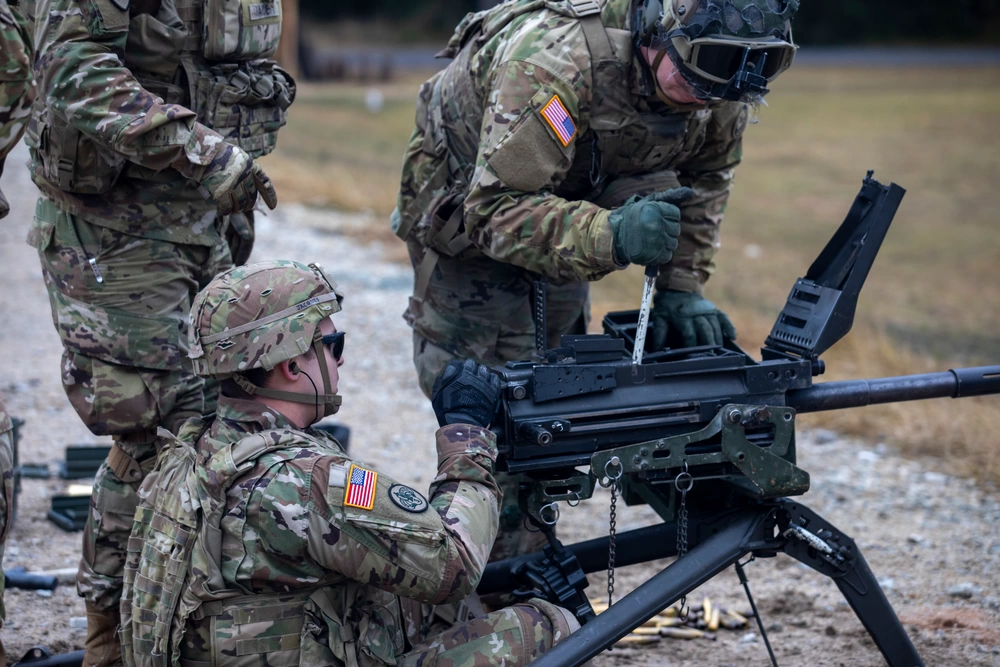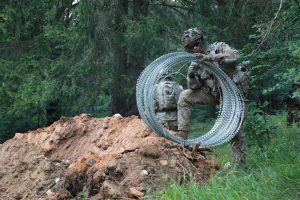Make the Training Cycle Work For You

It is a bright and muggy morning at Fort Campbell. You are already sweating from the humidity walking from your car. You feel excited for a brief with your commander regarding a multi echelon training you and your platoon have put a lot of time and effort into.
The brief goes flawlessly. Your commander is impressed. You get on the Battalion Commander’s calendar. They are impressed. Then, Brigade Commander, who is also impressed. Division gets word and throws in their support. You have all green lights. All the hard work you and your NCOs put into this training is going to pay off.
Until it doesn’t.
A week after you get the final green light, you receive a Division tasking. Two weeks after that, two of your key leaders get ATRRS slots. Another two weeks later, your OPFOR is tasked out. With a few weeks left before training begins, your PSG is tasked to be an OC/T for another brigade. Shortly after that, two of your soldiers get a tasking for gate guard. The nail in the coffin comes as the aircraft you had scheduled get rerouted to an NFL fly over.
This sounds a little too bad to be true. It’s not. It was a nightmarish experience, but you make the most of it. You have to.
Sadly, Helmuth von Moltke was correct in that “no battle plan survives contact with the enemy”
But why is the Army the enemy here?
“The Army trains to fight and win… We do this through challenging, relevant, and realistic training performed to the highest standards”
This is from the first paragraph in the Army manual on Training. If the unit first discussed in the manual is the Company, why all the obstacles for Companies to conduct good training?
Let me suggest one skill that might have alleviated my training woes, managing training cycles.
Training Cycles
My training took place during an unofficial amber cycle. FM 7-0 says amber is,
Units [that] have training resource priority behind green cycle units. Commanders normally focus training in the amber cycle on small unit, individual, leader, and battle task proficiency. Higher commanders only assign amber cycle units taskings that exceed red cycle units’ ability to support.
The amber cycle is often combined with the red cycle. The red cycle units “are the primary organizations that execute higher headquarters directed support taskings. Units in this cycle still conduct training, but training focuses primarily on individual tasks, weapon proficiency and self-development opportunities”. Amber training focuses primarily on field exercises, situational training exercises, unit technical training, etc.
Knowing the training cycles gives you the tools to manage training time effectively. However, knowing is only half the battle.
How to Hack Your Training
First. Find out what cycle your unit is in. Don’t know? Ask. Not getting a full answer? Request guidance. Don’t have an assigned training cycle? Well…
Second. Tactfully request a memo placing you in a cycle. Use your good judgment and request the cycle you need. Have realistic, valuable, and detailed training plans. Since there is no designated amount of time for any cycle, you can request as much time as you need.
If my unit had the written approval for a green cycle, we would “have training resource priority and focus predominately on unit collective training. Higher commanders protect these units from taskings and training distracters. Green cycle is also referred to as prime time training.” Sounds nice doesn’t it?
Third. What if you do all the leg work and still get a no? Great! You now understand some left and right limits. Remember that the better the plan, the better prepared you are. Even if there is minimal time and resources you can still have valuable training.
Make creative training a priority. Invest in having the best trained soldiers. It will take a lot of effort on your part, but you can be the best at it. Good things come from good training.
Notes
All quotations in this article can be found in:
For additional resources on planning and making requests for training, you might find FM 7-0 Table 3-1 helpful.
Michael Watkins is former enlisted Military Intelligence turned OCS graduate Signal Officer. He has served with 3rd Brigade, 101st Airborne Division, and serves with the Combat Aviation Brigade, 1st Armored Division.
Bradley Moffitt is currently in the Army Reserves as an Adjutant General Officer, previously serving as Enlisted in both the Active and Reserve Components since 2009. He has two combat deployments and a third overseas tour with the 1st Infantry Division.
Joshua Jones is a Signal Officer and graduate of OCS. Formerly he was enlisted in Military Intelligence at Fort Bliss, TX. He is currently an EW OIC in the 1st Infantry Division.
Related Posts

Going Off Script, But Staying on Track: A Career Guide for Junior Leaders
Intro I walked into LTC Tomi King’s office as a new 2LT in his formation. We discussed all the normal talking points in that initial counseling – family, where I …

Fighting as an Enabler Leader
(U.S. Army Photo by Cpl. Tomarius Roberts, courtesy of DVIDS)Enablers provide capabilities to commanders that they either do not have on their own or do not have in sufficient quantity …

Defeating the Drone – From JMRC’s “Skynet Platoon”
If you can be seen, you can be killed—and a $7 drone might be all it takes. JMRC’s Skynet Platoon discuss their TTPs to defeat the drone.
